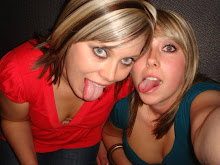Craft Lesson 2: Where does Luck come from: This Next New Year by Janet S. Wong
Resource Material:
This Next New Year by Janet S. Wong. Every child will bring something that they feel is lucky.
Discussion:
There are so many items that hold value to people for many different reasons. We deem a thing “lucky” or “good” for many different reasons; maybe it’s lucky because the person who gave it to you was a good person, or maybe something good happened on the day you received it—any way you look at it, this item holds a special place in your heart. This book shows different superstitions that are supposed to bring you luck (ex. When your palms itch, you are supposed to be coming into some money soon). I would like to talk to the students about what they feel makes them good.
How to Teach It:
How many of you feel like you are a good person? What makes you feel lucky? Is there a certain object that you carry with you that brings you luck? (Then I would pull out the object that I feel makes me lucky to show the class.) I would say, “I always have this picture with me, because I think that when I have it, good things happen to me.” I would go on and let each child stand up and show their object and give a short explanation on why they believe it brings them luck. When we read the book, I would point out the different cultural superstitions that are supposed to bring good things. For example, lighting a string of firecrackers is supposed to ward off bad things for the Next New Year. Then as a class, we would think of things that Americans think are lucky (ex. rabbit’s foot, four leaf clover, pennies on the ground). I would have researched some of the more common good luck charms, and give the students a quick background on why these objects were considered lucky , and tie in traditions based on those facts. We have traditions that we learn from our ancestors, certain things that we believe, and although we are not sure why we believe them, we continue to pass them on to the generations after us.
Related Topics: Traditions, History, Superstitions
Resource Material:
This Next New Year by Janet S. Wong. Every child will bring something that they feel is lucky.
Discussion:
There are so many items that hold value to people for many different reasons. We deem a thing “lucky” or “good” for many different reasons; maybe it’s lucky because the person who gave it to you was a good person, or maybe something good happened on the day you received it—any way you look at it, this item holds a special place in your heart. This book shows different superstitions that are supposed to bring you luck (ex. When your palms itch, you are supposed to be coming into some money soon). I would like to talk to the students about what they feel makes them good.
How to Teach It:
How many of you feel like you are a good person? What makes you feel lucky? Is there a certain object that you carry with you that brings you luck? (Then I would pull out the object that I feel makes me lucky to show the class.) I would say, “I always have this picture with me, because I think that when I have it, good things happen to me.” I would go on and let each child stand up and show their object and give a short explanation on why they believe it brings them luck. When we read the book, I would point out the different cultural superstitions that are supposed to bring good things. For example, lighting a string of firecrackers is supposed to ward off bad things for the Next New Year. Then as a class, we would think of things that Americans think are lucky (ex. rabbit’s foot, four leaf clover, pennies on the ground). I would have researched some of the more common good luck charms, and give the students a quick background on why these objects were considered lucky , and tie in traditions based on those facts. We have traditions that we learn from our ancestors, certain things that we believe, and although we are not sure why we believe them, we continue to pass them on to the generations after us.
Related Topics: Traditions, History, Superstitions





0 comments:
Post a Comment